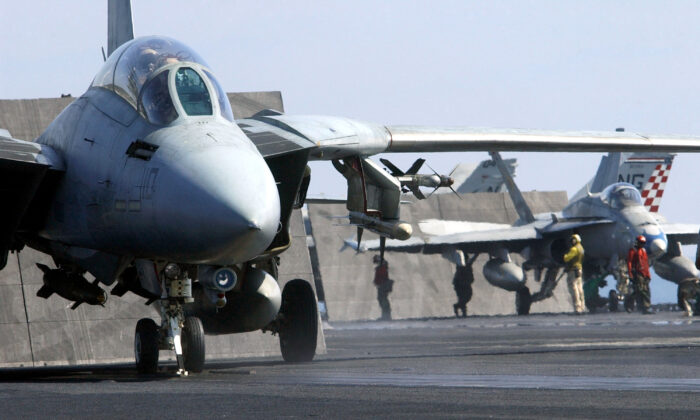The F-14E would outperform the F-35C in carrying out the types of missions that our fighters and strike craft have been conducting for the past three decades. In the original “Top Gun” movie from 1986, Maverick expressed his need for speed, which the iconic F-14A Tomcat delivered impressively. However, in the 2022 sequel “Top Gun: Maverick,” the Navy’s F/A-18ef Super Hornet took the spotlight. Despite the Super Hornet’s reliability over the years, many believe that the faster F-14 was retired prematurely in 2006 due to political reasons and the misconception that a high-speed fleet defense fighter was no longer necessary after the Cold War.
What if the U.S. Navy and the Department of Defense had chosen to upgrade a significant number of the existing F-14 Tomcats to the Super Tomcats for the 21st century, as proposed by Grumman? The resulting F-14E Super Tomcat would have been faster, more maneuverable, had greater range, and could carry more weapons compared to the older models. It would have been equipped with state-of-the-art avionics, electronics warfare capabilities, and top-tier AESA radars, making it a formidable competitor in the modern battlefield.
With upgraded engines, improved wings, increased fuel capacity, and enhanced weapons-carrying capabilities, the F-14E Super Tomcat would have been a superior choice for missions requiring speed, endurance, and firepower. Compared to the F-35C, the F-14E would offer better speed, acceleration, service ceiling, range, endurance, and combat capabilities, especially in close-range dogfights.
Furthermore, the F-14E’s twin-engine design and robust airframe would provide better power and cooling for advanced avionics and radar systems, offering a significant advantage over the F-35C, which has been struggling with cooling issues. The F-14E’s ability to continue flying with one engine out and its capacity to deliver more ordnance over time would make it a preferred choice for Navy pilots like Maverick.
In conclusion, the F-14E would excel in executing missions that our fighters and strike craft have been handling for the past 30 years, outperforming the F-35C in terms of speed, range, endurance, maneuverability, and combat capabilities. Despite the F-35C’s stealth features, the F-14E’s overall performance and reliability would make it a more effective and versatile option for naval operations. When considering how the F-14E would fare against an F-35C in Beyond Visual Range (BVR) combat, various factors come into play. These include factors such as radar capabilities, utilizing superior speed and range to approach the F-35C from vulnerable angles, and employing electronic support measures to increase the likelihood of successful missile shots at the F-35. The F-14E’s extended range and endurance also reduce its reliance on non-stealthy air tankers, potentially revealing the presence of stealth aircraft.
Conversely, there are scenarios where the F-35C’s low probability of detection radar may evade detection by the F-14E’s electronic support measures, allowing it to target the Super Tomcat with its missiles. In such cases, the F-35C may overcome the F-14E’s jamming and defensive measures, highlighting the uncertainty of the outcome in different circumstances.
Despite these considerations, it is clear that Maverick, or any pilot for that matter, would likely prefer the F-14E over the F-35C due to its demonstrated combat capabilities, higher speed, better acceleration, superior agility, extended range, and overall aesthetic appeal.
Please note that the opinions expressed in this article are solely those of the author and may not necessarily align with the views of The Epoch Times.
Source link






